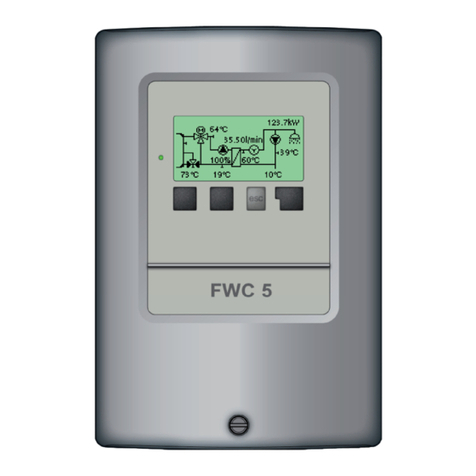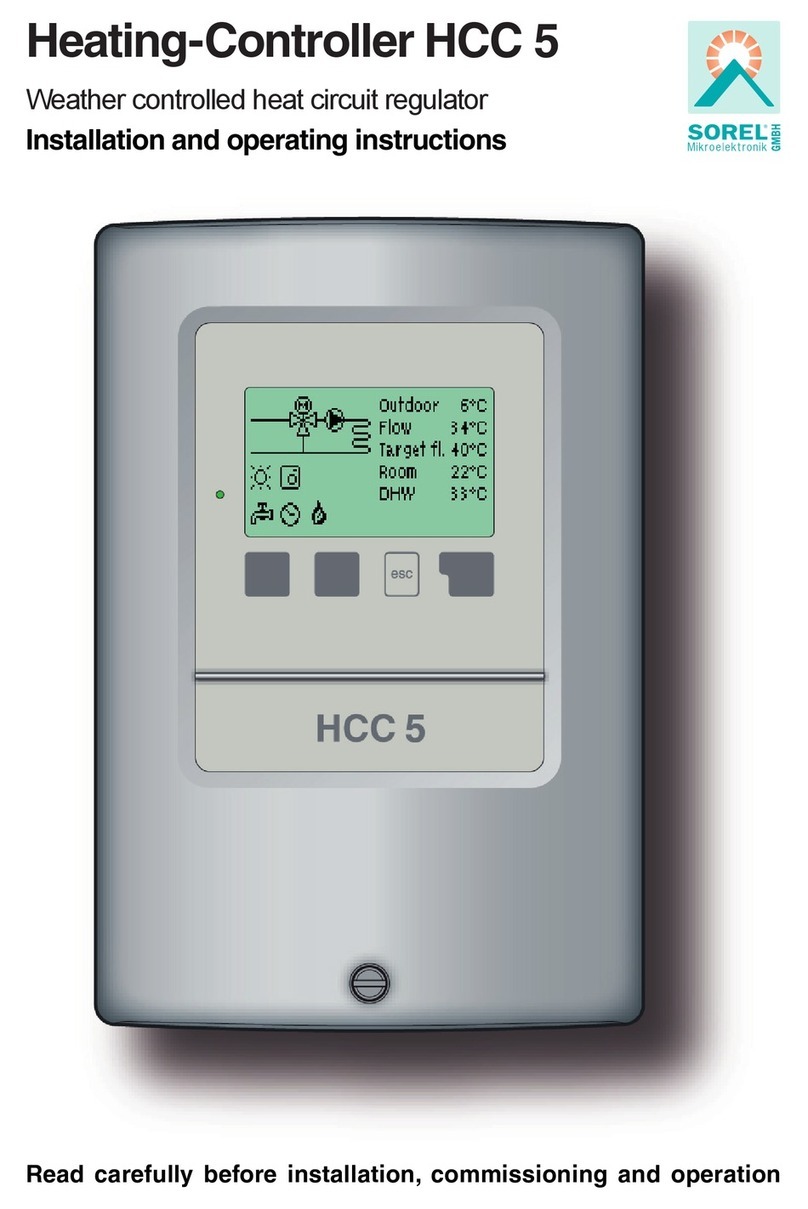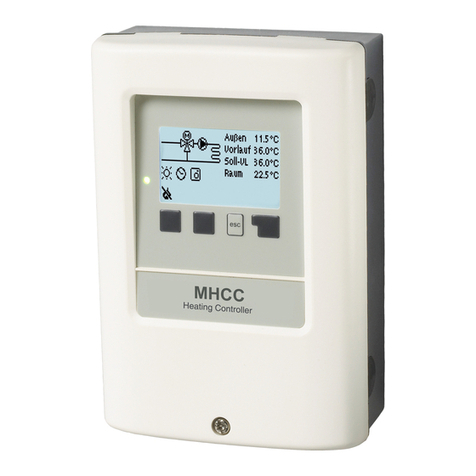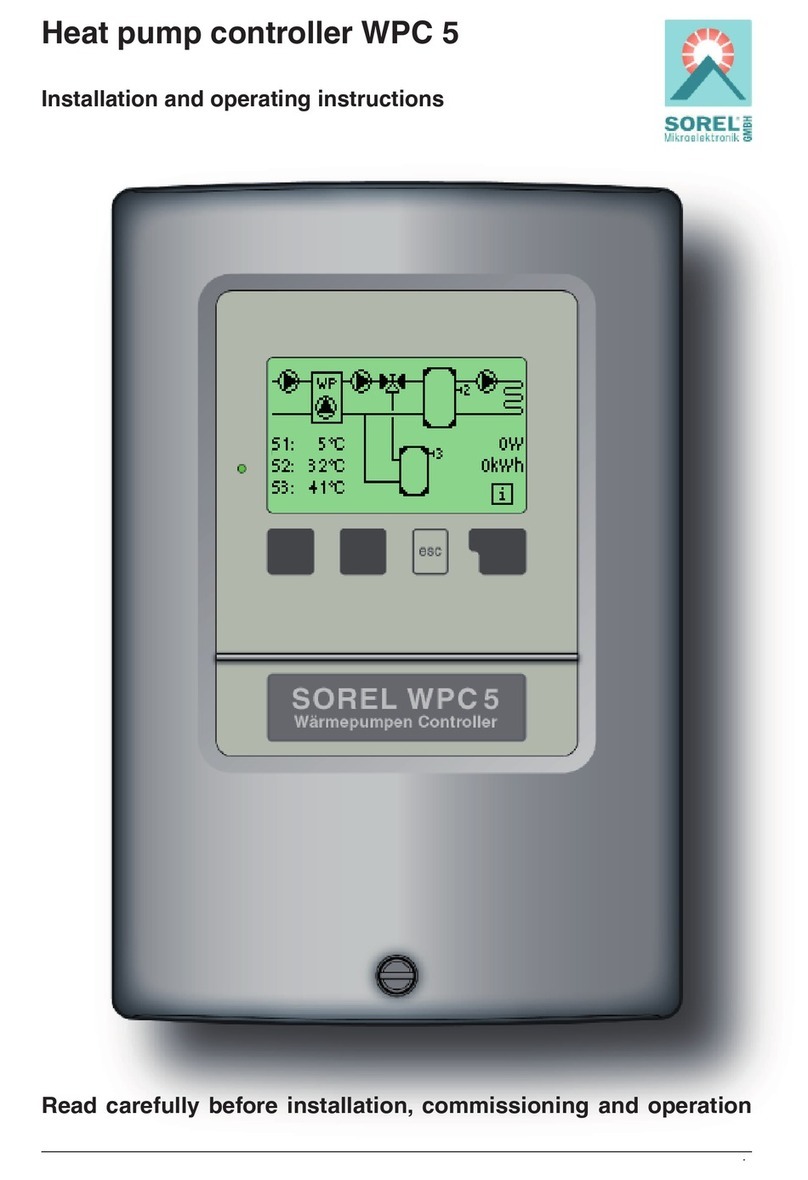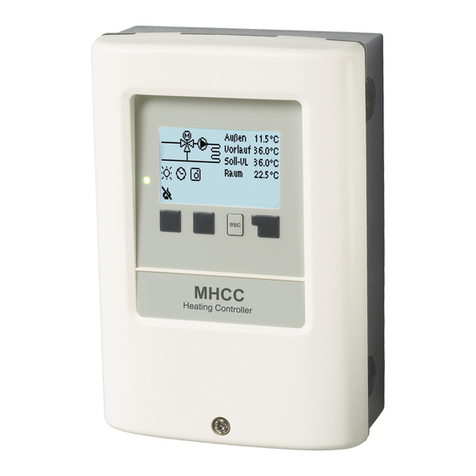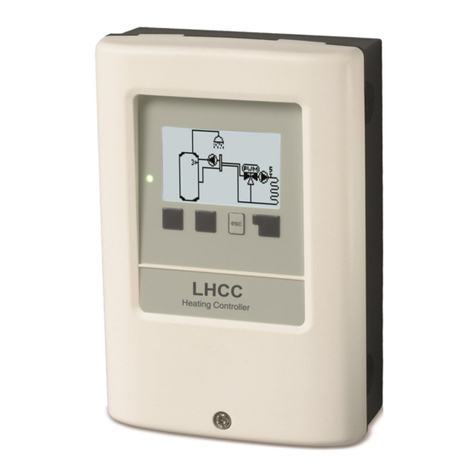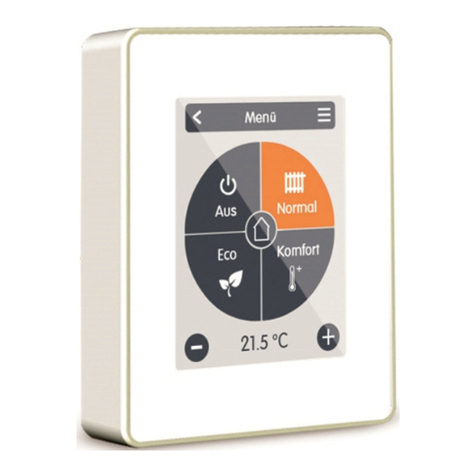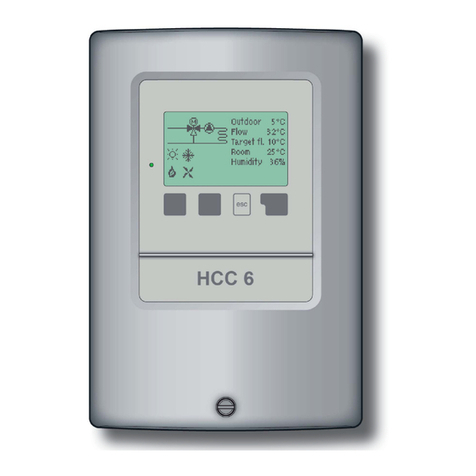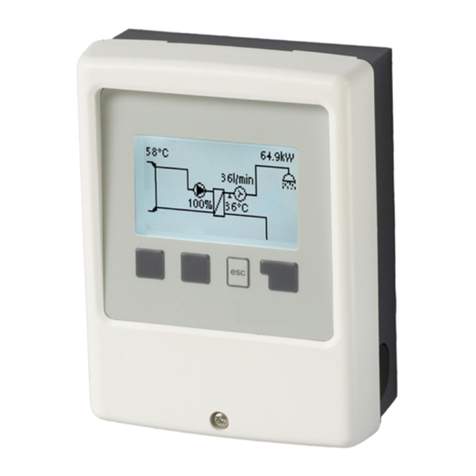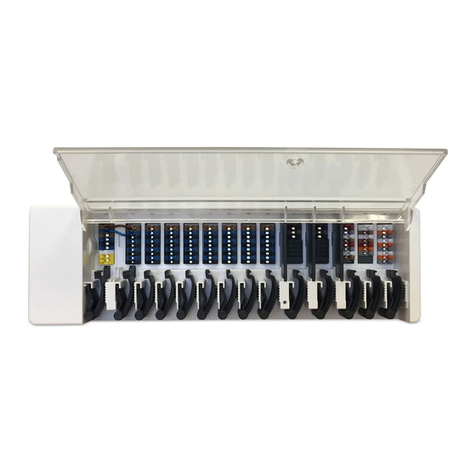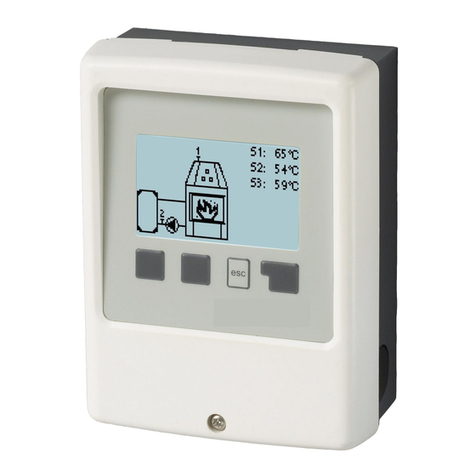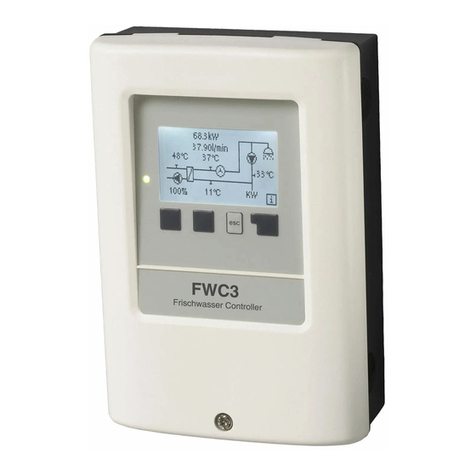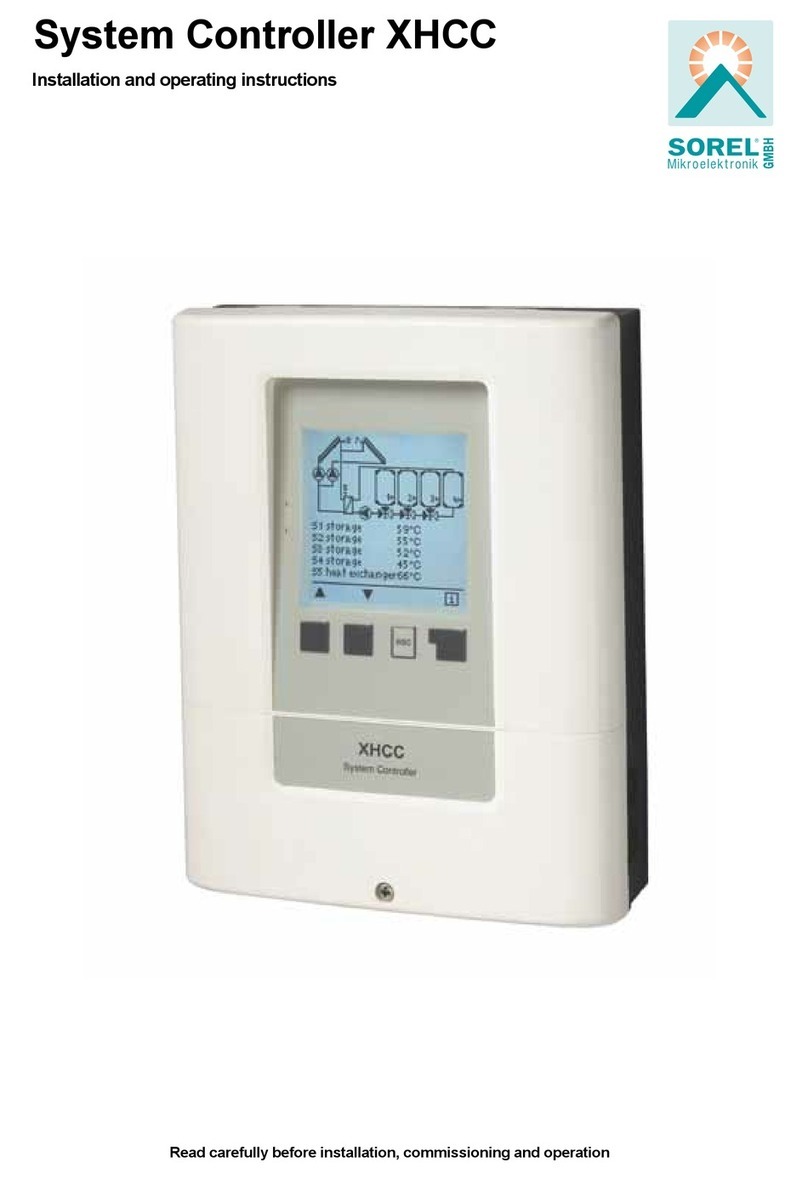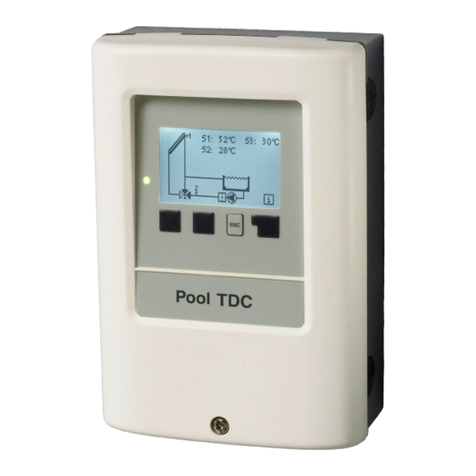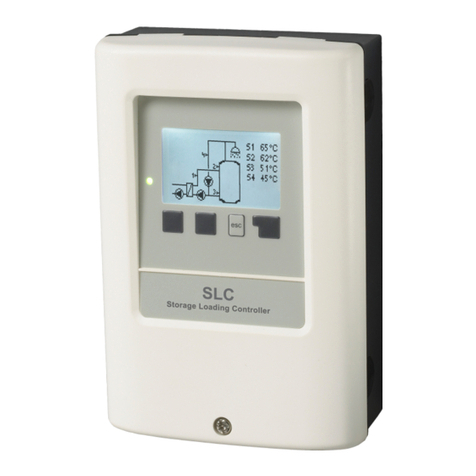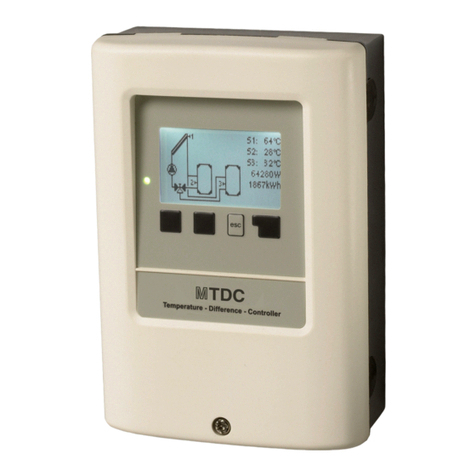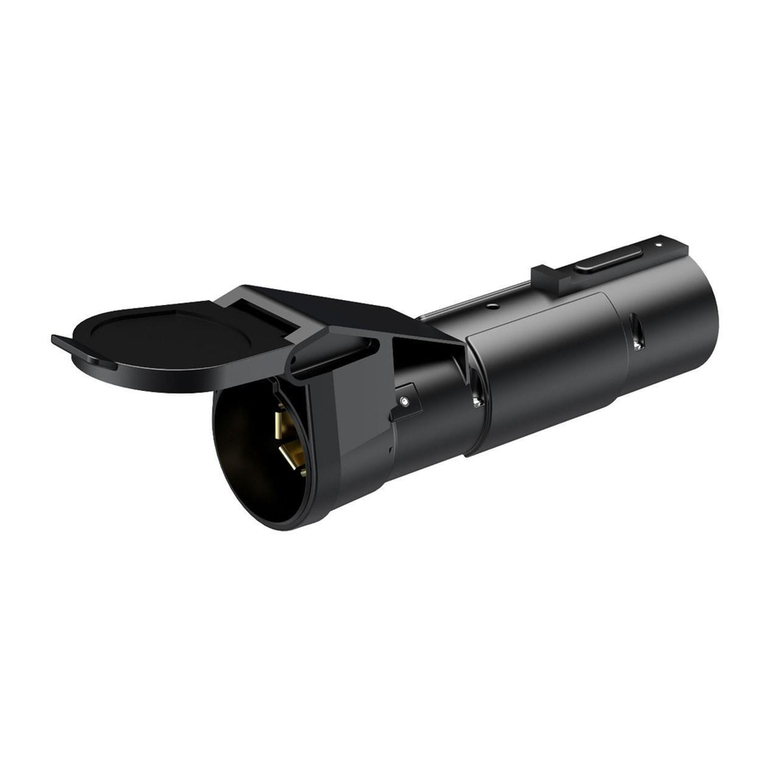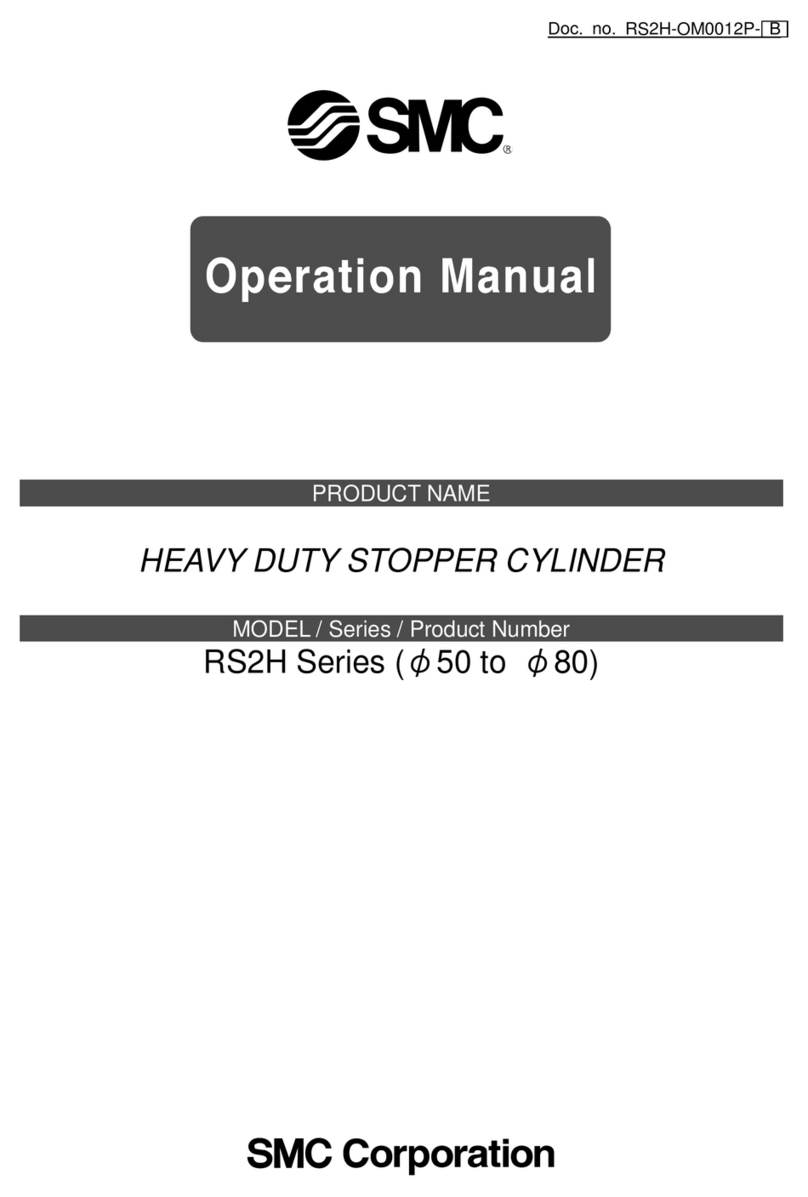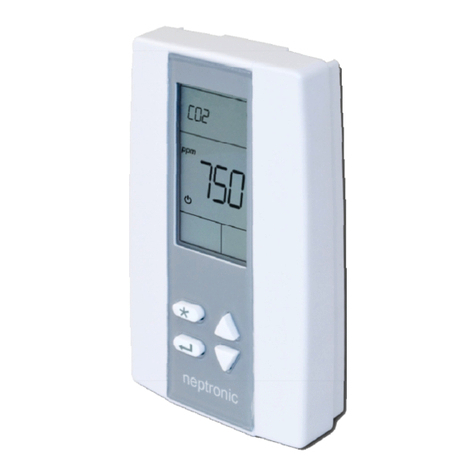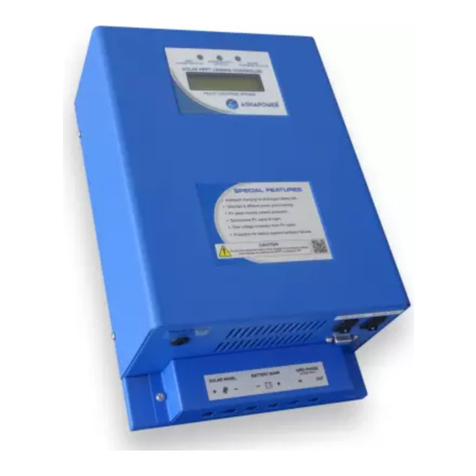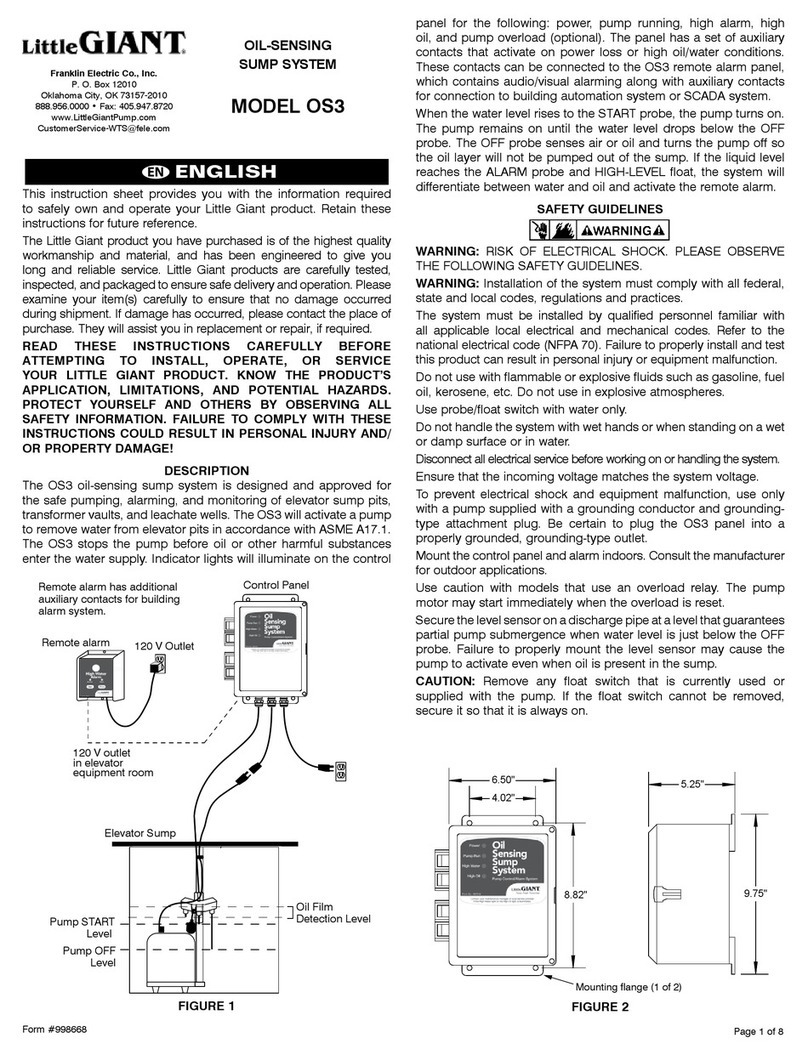Sorel MHCC User manual

Heating Controller MHCC
Weather-compensated heating circuit controller
Installation and operating instructions
Read carefully before installation, commissioning and operation

Content
Safety Instructions 3
EU-Conformity 3
General instructions 3
Explanation of Symbols 3
Changes to the Unit 4
Warranty and Liability 4
Disposal and Pollutants 4
Description MHCC 5
About the Controller 5
Scope of supply 5
Specifications 6
Hydraulic Variants 7
Installation 8
Electrical Terminals 8
RC21 Remote adjuster with thermostat 9
Settings 9
Temperature Sensors 9
Installation 9
Wall Installation 10
Electrical Connection 10
Installing the Temperature Sensors 11
Temperature Resistance Table for Pt1000 Sensors 11
Operation 12
Display and Input 12
Commissioning help 13
1. Measurement values 13
2. Statistics 13
Today 14
28 days 14
Operating hours 14
Error messages 14
Reset / Clear 14
3. Times 14
Time & Date 14
Daylight saving time 14
Heating Circuit (Day) 14
Heating Circuit Comfort 14
4. Operating mode 15
Manual 15
5. Settings 15
Operating mode 15
S/W Day 15
S/W Night 15
Curve 15
Day Correction 16
Night Correction 16
Comfort Temperature Boost 16
Heating Circuit Reference 16
Max. Flow 16
Turn off HC 17
Heat request 17
Eco mode (during solar charge) 17
Reference/Actual - 17
14-day Reference 17
6. Protective Functions 18
Seizing Protection 18
Frost Protection 18
Min. Flow 18
Max. Flow 18
Discharge Protection 18
7. Special Functions 19
Sensor Calibration 19
Commissioning 19
Factory Settings 19
Mixer 19
Turn Time 19
Pause Factor 19
Increase 19
Room Controller heating circ. (X) 19
Eco Display Mode 20
Network 20
Access Control 20
Ethernet 20
CAN bus ID 21
8. Menu Lock 21
9. Service values 21
10. Language 21
Malfunctions/Maintenance 22
Additional Information 23
External relay at signal output V(X) (0-10V / PWM) 23
CAN bus 23
Tips 23

Safety Instructions
EU-Conformity
By affixing the CE mark to the unit the manufacturer declares that the MHCC conforms to the following relevant safety regulations:
lEU low voltage directive 2014/35/EU
lEU electromagnetic compatibility directive 2014/30/EU
conforms. Conformity has been verified and the corresponding documentation and the EU declaration of conformity are kept on
file by the manufacturer.
General instructions
Please read carefully!
These installation and operating instructions contain basic instructions and important information regarding safety, installation,
commissioning, maintenance and the optimal use of the unit. Therefore these instructions must be read and understood com-
pletely by the installation technician/specialist and by the system user before installation, commissioning and operation of the
unit.
The device is an automatic, electric Weather-compensated heating circuit controller for/in Heating system and similar applic-
ations. Install the device only in dry rooms and under environmental conditions as described under "Technical Data".
The valid accident prevention regulations, VDE regulations, the regulations of the local power utility, the applicable DIN-EN stand-
ards and the installation and operating instruction of the additional system components must also be observed.
Under no circumstances does the unit replace any safety devices to be provided by the customer!
Installation, electrical connection, commissioning and maintenance of the device may only be carried out by an appropriately
trained specialist. Users: Make sure that the specialist gives you detailed information on the function and operation of the unit.
Always keep these instructions in the vicinity of the unit.
The manufacturer does not take over any liability for damage caused through improper usage or non-compliance of this manual!
Explanation of Symbols
Danger
Failure to observe these instructions can result in electrocution.
Danger
Failure to observe these instructions can result in serious damage to health such as scalding or life-threatening
injuries.
Caution
Failure to observe these instructions can result in destruction of the unit or the system, or environmental dam-
age.
Caution
Information which is especially importation for the function and optimal use of the unit and the system.
3

Changes to the Unit
lChanges, additions to or conversion of the unit are not permitted without written permission from the man-
ufacturer.
lIt is likewise forbidden to install additional components that have not been tested together with the unit.
lIf it becomes clear that safe operation of the unit is no longer possible, for example because of damage to the
housing, turn the Unit off immediately.
lAny parts of the unit or accessories that are not in perfect condition must be exchanged immediately.
lUse only original spare parts and accessories from the manufacturer.
lMarkings made on the unit at the factory must not be altered, removed or made illegible.
lOnly the settings described in these instructions may be set using the Unit.
Changes to the unit can compromise the safety and function of the unit or the entire system.
Warranty and Liability
The unit has been manufactured and tested with regard to high quality and safety requirements. The unit is subject to the stat-
utory guarantee period of two years from the date of sale. The warranty and liability shall not include, however, any injury to per-
sons or material damage that is attributable to one or more of the following causes:
lFailure to observe these installation and operating instructions.
lImproper installation, commissioning, maintenance and operation.
lImproperly executed repairs.
lUnauthorized structural changes to the unit.
lUse of the device for other than its intended purpose.
lOperation above or below the limit values listed in the ‚Specifications‘ section.
lForce majeure.
Disposal and Pollutants
The unit conforms to the European RoHS 2011/65/EU for the restriction of the use of certain hazardous substances in electrical
and electronic equipment.
Under no circumstances may the device be disposed of with the normal household waste. Dispose of the unit only at
appropriate collection points or ship it back to the seller or manufacturer.
4

Description MHCC
About the Controller
The Weather-compensated heating circuit controller MHCC facilitates efficient use and function control of your Heating system
possible while its handling is intuitive. After every input step the suitable functions are matched to the keys and explained in a text
above. In the menu 'measurement values and settings' are help text and graphics in addition to key words.
The MHCC can be used with different variants of installations, see " Hydraulic Variants " on page 7.
Important characteristics of the MHCC are:
lDepiction of graphics and texts using a lit display.
lSimple viewing of the current measurement values.
lStatistics and system monitoring by means of statistical graphics
lExtensive setting menus with explanations.
lMenu block can be activated to prevent unintentional setting changes.
lResetting to previously selected values or factory settings.
Scope of supply
lWeather-compensated heating circuit controller MHCC
l3 screws 3,5 x 35 mm and 3 plugs 6 mm for wall installation.
l6 strain relief clips with 12 screws, replacement fuse 2TA
lMHCC Installation and operating instructions
Optionally contained depending on design/order:
lOutdoor sensor: 1x outdoor sensor e.g. TA52 (Pt1000) - article number 87000
l1x pipe-mounted sensor e.g. TR/P4 (Pt1000) - article number 81140
l1x indoor sensor/Remote controller with mode switch RC21 - article number 89021
lCAN Bus Accessories: CAN-Bus connection set with 1 or 2.9 meter cable - article number 89201 or 89203
lExternal relay for V1 / V2: External relay with potential free contact - article number 77502
5

Specifications
Model MHCC Weather-compensated heating circuit controller
Temperature controller class VI
Energy efficiency 4 Class VIII / 5% with 3 °CALEON possible
Standby loss 0,5
Request type heater
Electrical specifications:
Power supply 230 VAC +/- 10%, 50 ... 60 Hz
Power consumption / standby 0,5 W - 2,3 W/ 0,5
Internal fuse 1 2A slow blow 250V
Protection category IP40
Protection class / overvoltage category II / II
Inputs/Outputs Measuring range
Sensor inputs 4 Pt1000 temperature
sensor
-40 °C ... 300 °C
Sensor inputs RC21 1 RC (S3 and S4)
Outputs mechanical relay 3
mechanical relay R1 - R3 460VA for AC1 / 460W for AC3
0-10V/PWM output V1 for 10 k Ω working resistance 1 kHz, level 10 V
+ clemp / voltage output + Max. load by external devices 24V / 2W
Max. cable length
Pt1000 sensor <10m
CAN <3m; at> = 3m, a shielded twisted pair cable must be used. Isolate
shielding and connect it to the protective conductor of only one of the
devices.
0-10V/PWM <3m
24 V/DC voltage output <150m
mechanical relay <10m
Interface
Fieldbus CAN
Permissible Ambient Conditions
for controller operation 0 °C - 40 °C, max. 85 % rel. humidity at 25 °C
for transport/storage 0 °C - 60 °C, no moisture condensation permitted
Other Specifications and Dimensions
Housing design 2-part, ABS plastic
Installation methods Wall installation, optionally panel installation
Overall dimensions 163 mm x 110 mm x 52 mm
Aperture installation dimensions 157 mm x 106 mm x 31 mm
Display Fully graphical display, 128 x 64 dots
Light diode multicolour
Real Time Clock RTC with 24 hour power reserve
Operation 4 entry keys
6

Hydraulic Variants
The following illustrations should be regarded only as schematic representations of the respective hydraulic systems
and do not claim to be complete. Under no circumstances should the controller replace any safety devices. Depend-
ing on the specific application, additional system and safety components such as check valves, non-return valves,
safety temperature limiters, scalding protectors, etc., may be required.
Mixed heating circuit Mixed heating circuit with mixer and auxiliary heating
7

Installation
Electrical Terminals
Low voltages
max. 24 VAC / DC
Mains voltages
230 VAC 50 - 60 Hz
Terminal: Connection for:
S1 Outdoor sensor
S1 Outdoor sensor (GND)
S2 Flow temperature sensor
S2 Flow temperature sensor (GND)
S3 Room sensor (RC21)
S3 Sensor ground (GND-RC21)
V1 0-10V output; heat request Install additional relais
(item number 77502) if request is done via a normally
open contact.
- GND for heat request
S4 Remote control (RC21)
+ clemp /
voltage output
24 V/DC voltage output for external devices
Max. load by external devices 24V / 2W
Terminal: Connection for:
N Pump
R1 Pump
N Mains phase conductor
L Mains phase conductor
N Neutral Mixer
R2 Mixer open
R3| not used 230 V
R3 Mixer close
The PE protective conductor must be connected to the
PE metal terminal block!
On the control board
CAN To connect several controllers with each other using a
CAN cable. Terminate the CAN Bus on both ends
using resistors, with the assignment of the CAN bus
connectors being arbitrary!
At R3I are permanently 230v when the relay is inactive. Wrong wiring can damage the connected components.
8

RC21 Remote adjuster with thermostat
The RC21 is an optional accessory and is normally not included in the scope of supply.
The remote adjuster with integrated thermostat RC21 provides you with easy to use temperature controlled adjustment of
heating from within your living space.
Settings
The dial is used to parallel translate the heating curve. The flow temperature (still regarding the outdoor temperature) is raised or
lowered respectively by your adjustment. When the dial is turned all the way down, the heat circuit is switched off. Frost protection
stays active to prevent damage.
Temperature Sensors
The RC21 contains a temperature sensor which is used by the controller. If the settings in the controller allow it, the sensor is
used to alter the flow temperature. The switch changes the operation mode of the controller.
In Timer mode the temperature is controlled according to the set thermostat periods.
In Timer mode the temperature is controlled according to the set thermostat periods.
In Continous day mode the set periods are ignored and the temperature is controlled according to the Day time settings. In
Continous night mode the temperature is usually set to lowest. This setting is best suited for periods of long absence like
e.g. holidays.
Installation
Carefully remove the dial from the casing with a screwdriver. Loosen the screw beneath. Remove the bright part of the casing
from the black socket.
The RC21 is connected via terminal block to the controller.
The RC21 is suited for low voltage only!
9

Wall Installation
1. Unscrew cover screw completely.
2. Carefully pull upper part of housing
from lower part. During the removal,
the brackets are released as well.
3. Set upper part of housing aside Do not
touch the electronics.
4. Hold the lower part of the housing up
to the selected position and mark the
three mounting holes. Make sure that
the wall surface is as even as possible
so that the housing does not become
distorted when screwed on.
5. Using a drill and size 6 bit, drill three
holes at the points marked on the wall
and push in the plugs.
6. Insert the upper screw and screw it in
slightly.
7. Fit the upper part of the housing and
insert the other two screws.
8. Align the housing and tighten the three
screws.
1. open terminal cover.
2. Strip lines a max. of 55 mm, assemble
the strain reliefs, strip wire ends 8-9
mm (figure 1)
3. Open clamps with a fitting screwdriver
(figure 2) and connect electrical system
to the controller.
4. Suspend clip room cover again and
close with the screw.
5. Turn on mains supply and operate the
controller.
Electrical Connection
Before working on the unit, switch off the power supply and secure it against being switched on again! Check that there
is no power flowing! Electrical connections may only be made by a specialist and in compliance with the applicable
regulations. The unit may not be put into operation if there is visible damage to the housing, e.g. cracks.
The unit may not be accessible from behind.
Low-voltage cables such as temperature sensor cables must be routed separately from mains voltage cables. Feed
temperature sensor cables only into the left-hand side of the unit, and mains voltage cables only into the right-hand
side.
The customer must provide an all-pole disconnecting device, e.g. an emergency heating switch.
The cables being connected to the unit must not be stripped by more than 55 mm, and the cable jacket must reach into
the housing just to the other side of the strain relief.
10

Installing the Temperature Sensors
The controller operates with Pt1000 temperature sensors which are accurate to 1 °C, ensuring optimal control of system func-
tions.
If desired, the sensor cables can be extended to a maximum of 30 m using a cable with a cross-section of at least
0.75 mm². Ensure there is no contact resistance! Position the sensor precisely in the area to be measured! Only use
immersion, pipe-mounted or flat-mounted sensors suitable for the specific area of application with the appropriate
permissible temperature range.
Low-voltage cables such as temperature sensor cables must be routed separately from mains voltage cables. Feed
temperature sensor cables only into the left-hand side of the unit, and mains voltage cables only into the right-hand
side.
Temperature Resistance Table for Pt1000 Sensors
°C -20 -10 0 10 20 30 40 50 60 70 80 90 100
Ω 922 961 1000 1039 1077 1116 1155 1194 1232 1270 1308 1347 1385
11

Operation
Display and Input
Pump (rotates when active)
Mixer (black when active)
HC -Day mode (Time progr.)
HC-Night mode (Time progr.)
HC-Comfort mode (Time progr.)
Day mode
Night mode
Day mode due to RC21
Night mode due to RC21
Heat request on/off
Heat request incoming from CAN bus
Heat requested over CAN bus
Reference value mode
Reference value 14 day
External thermostat off
Warning/Error message
New information available
Further symbols can be found in the special
functions
The display‘s (1), extensive text and graphical mode,
enables simple, almost self-explanatory, operation of the con-
troller.
The LED (2) lights up green when a relay is switched on. The
LED (2) lights up red when operating mode ‚Off‘ is set. The
LED (2) flashes quickly red when an error is present.
Entries are made using 4 keys (3+4), to which contextual
functions are assigned. The ‚esc‘ key (3) is used to cancel an
entry or to exit a menu. If applicable, a request for con-
firmation appears to save the made changes.
The function of the other 3 keys (4) is shown in the display
right above the keys. The right-hand key generally has a con-
firmation and selection function.
The graphics mode appears if no key is pressed for 2
minutes or after exiting the main menu with ‘esc’.
The temperature overview appears when you press the.
left button. Tapping the button again leads back to
The graphic overview.
Hitting the "esc" key in the graphics mode takes you directly
to the main menu.
Examples for key settings:
+/- Increase / decrease values
▼/▲ Scroll down / up menu
Yes/No agree / reject
About further information
Back to the previous display
Ok Confirm selection
Confirm Confirm setting
12

Commissioning help
1. Set language and time
2. Commissioning help / setup wizard
a) select or
b) skip.
The setup wizard guides through the necessary basic settings in the cor-
rect order. Each parameter is explained in the control
display. Pressing the „esc“ key takes you back to the previous setting.
b) With free commissioning the settings should be made in the following
order:
lmenu 10. Language
lmenu 3. Time, Date and Operating Times.
lmenu 5. Heating Circuit Settings, all values.
lmenu 6. Protection Functions (if any adjustments neces-
sary).
lmenu 7. Special Functions (if any adjustments neces-
sary).
3. In menu operating mode "4.2. Manual”, test the witch outputs with the
consumers connected and check the sensor values for plausibility. Then
set to automatic mode.see " Manual " on page 15
The setup wizard can be accessed in menu 7.2. at any time.
Consider the explanations for the individual parameters on the following pages and check if further settings are
necessary for your application.
1. Measurement values
Serve to display the current measured temperatures.
If ‚error‘ appears on the display instead of the measurement
value, there may be a defective or incorrect temperature sensor.
If the cables are too long or the sensors are not well-placed, small
deviations in the measurement values may occur. In this case, the
display values can be compensated by adjustments in the con-
troller - see ‚Sensor calibration‘. The selected program, con-
nected sensors and the specific model design determine which
measurement values are displayed.
2. Statistics
Serve for function control and long-term monitoring of the system.
For system data statistics it is essential for the time to be set
accurately on the controller. Please note that the clock con-
tinues to run for about 24 hours if the mains voltage is inter-
rupted, and afterward must be reset. Improper operation or an
incorrect time may result in data being cleared, recorded incor-
rectly or overwritten. The manufacturer accepts no liability for
the recorded data!
13

Today
Flow temperature of the last 24 hours
In the graphical overview the characteristics of outdoor and flow temperature for the present day is shown from 0 ... 24 h. The right
button changes the unit of time (days) and the two left buttons scroll through the diagram.
28 days
Flow temperature during the last 28 days
In the graphical overview the characteristics of the outdoor and flow temperature during the last 28 days is shown. The right but-
ton changes the unit of time (days) and the two left buttons scroll through the diagram.
Operating hours
Here the operating hours of the heating circuit and other switch or signal outputs are displayed. This is the entire time the heating
circuit pump and other switch or signal outputs were active. The displayed date in this menu is the date of the last deletion. From
this date on the current count is added.
Error messages
Display of the last 15 errors in the system with indication of date and time.
Reset / Clear
Resetting and clearing the selected statistics. Selecting ‚all statistics‘ clears everything except the error log.
3. Times
Settings for time, date and operating times for the heating circuit.
The associated temperature reference values are
specified in Menu 5, ‚Settings‘.
Time & Date
Serve to set the current time and date.
For system data statistics it is essential for the time to be set accurately on the controller. Please note that the clock
continues to run for about 24 hours if the mains voltage is interrupted, and afterward must be reset. Improper oper-
ation or an incorrect time may result in data being cleared, recorded incorrectly or overwritten. The manufacturer
accepts no liability for the recorded data!
Daylight saving time
If this function is activated, the controller automatically changes to winter time or summer time (DST, Daylight Savings Time).
Heating Circuit (Day)
This menu is used to select the daytime mode times for the heating circuit; three time periods can be specified for each weekday
and copied to the following days.
Unspecified times are automatically considered to be night-time mode. The set times are only taken into account in the
‚Automatic‘ heating circuit operating mode.
Heating Circuit Comfort
This menu can be used to select three time ranges for each day of the week in which the heating circuit is supplied with an
increased comfort temperature, e.g. for quick heating in the morning.
14

4. Operating mode
To specify the operating modes for the heating circuit. After an interruption of
the mains voltage, the controller automatically returns to the last operating
mode selected.
Only in automatic mode does the controller use the set operating
times and the correspondingly set target flow temperatures!
Manual
In ‚Manual‘ mode, the individual relay outputs and the connected consumers can be checked for proper functioning and correct
assignment.
The operating mode ‚Manual‘ may only be used by specialists for brief function tests, e.g. during commissioning! Func-
tion in manual mode: The relays and thus the connected consumers are switched on and off by pressing a key, with no
regard to the current temperatures and set parameters. At the same time, the current measurement values of tem-
perature sensors are also shown in the display for the purposes of function control.
5. Settings
The basic settings for the control function of the heating circuit are applied.
Basic settings applied.
By no means does the controller replace the safety appliances on
site!
Operating mode
Heating= Automatic/Normal mode using the set times.
Reference Value = Fixed flow temperature regardless of the outdoor temperature. The desired flow temperature must be set in
Menu 4.3 .
14 days reference value program = For the next 14 days, you can enter the menu 4. temperatures for the next 14 days. After 14
days, the reference temperature of the 14th day is used continuously until the operating mode is changed. Different temperature
values can be set in menu 4.4 for every individual day.
S/W Day
Summer / Winter changeover in daytime mode
If this value is exceeded at the outdoor sensor the controller automatically switches the heating circuit off = Summer mode. If the
outdoor temperature drops below this value, the heating circuit is switched on again = Winter mode.
In addition to the operating times in normal daytime operation, this setting is also valid for times with activated comfort.
S/W Night
Summer/Winter changeover in night-time mode
If this value is exceeded at outdoor sensor S1 during the nighttime mode times, the controller automatically switches the heating
circuit off = Summer mode. If the outdoor temperature drops below this value, the heating circuit is switched on again = Winter
mode.
Curve
Type and slope of the heating characteristic curve
15

The characteristic curve is used to control the heat dissipation of the heating circuit relative to the outdoor temperature. The
demand for heat differs due to factors such as the type of building, heating, insulation and outdoor temperature. For this reason,
the controller can operate with a normal straight curve (setting ‚simple‘) or split curve (setting ‚split‘).
If ‚simple‘ is selected, the curve is adjusted using the graphic diagram. While setting the slope, the controller also shows the slope
value and the calculated target flow temperature at -12 °C as a reference point.
If ‚split‘ is selected, the curve is set in the following steps:
1. Slope over outdoor temperature for change
2. Outdoor temperature for slope change
3. Slope below outdoor temperature for change
While setting the slope, the controller also shows the slope value and the calculated target flow temperature at -12 °C as a ref-
erence point. In case of repeated adjustment of the split curve, the settings appear in reverse order.
The diagram shows the influence of the selected characteristic curve
steepness (standard curve) on the calculated reference flow
temperature of the heating unit. The correct characteristic curve is determ-
ined by defining the intersection point of the maximal calculated flow tem-
perature (=design temperature) at minimal outdoor temperature.
Example: The design temperature of the heater 60 °C flow at lowest out-
door temperature according to calculation of heat requirement
-12 °C. The intersection point renders a slope of 1.2 as the setting.
Day Correction
Parallel characteristic translation
The day correction causes a parallel shift of the heating curve during daytime operating hours, because with certain outdoor tem-
peratures the building might not be optimally heated with the set heating curve. With a non-optimised heating curve, the following
situations frequently occur: hot weather = room too cold/cold weather = room too hot. In this case, the slope of the curve should
be reduced stepwise by 0.2 points and increases the day correction
by 2 ... 4 °C each.
Night Correction
Parallel characteristic translation
The night correction produces a parallel translation of the heating characteristic during the nighttime operating hours. If a neg-
ative value is set for the night correction, the reference flow temperature is lowered accordingly during the nighttime operating
hours. In this manner, primarily at night, but also during the day when no-one is at home, the room temperature is lowered, thus
saving energy. Example: A day correction of +5 °C and a night correction of -2 °C produces a reference flow temperature in night-
time operation that is 7 °C lower.
Comfort Temperature Boost
Parallel characteristic translation
The comfort temperature boost is added to the set day correction. In this manner it is possible to carry out quick heating and/or
raise the temperature of living spaces at a certain time each day.
Heating Circuit Reference
If operating mode ‚Reference value‘ is selected, see " Operating mode " on page 15, the reference flow temperature must be set
here, regardless of the curve and outdoor temperature.
Max. Flow
This value is the upper limit of the reference flow temperature of the heating circuit If however, the temperature of the heating cir-
cuit exceeds the set value, the heat circuit shuts down until the temperature falls below this value. The system purged for 55
seconds every 5 minutes.
The customer must provide an additional limiting thermostat which is connected to the pumps in series (eg underfloor
heating) for safety.
16

Turn off HC
Summer: HC turns off when the summer/winter changeover (outside temperature) is exceeded.
Summer + Room: HC is turned off when the summer/winter changeover (outside temperature) or the room setpoint temperatures
are exceeded.
Heat request
MHCC can request a heat source (burner, heat pump, ...) if the heating circuit does not have enough energy (VL temperature).
Therfor either the signal output V1 is used or the request is transferred via the CAN bus to another controller in the CAN network.
Switching: Request is made via signal output V1.
Output signal to V1: "no request" = 0V, "request" = 10V
If a potential-free contact is required for the heat source, an external switching relay (Art. no. 77502) must be con-
nected to V1. see " External relay at signal output V(X) (0-10V / PWM) " on page 23.
Modulating: Request is made via signal output V1. The MHCC outputs the requested temperature (calculated target VL) as a
voltage via the signal output.
Example: Calculated target VL heating circuit 43 ° C, measured VL at sensor S2 40 ° C.
If the VL sensor exceeds the setpoint VL by 2K (preferece/actual -) for more than 2 minutes, the MHCC requests a heat source
with 4.3V (corresponds to 43 ° C setpoint VL).
The requested temperature can be raised with the value "Mod.Offset". 0.1V correspond to 1 ° C. If you set an offset of 0.5V, this
results in a requested temperature of 48 ° C or 4.8V (43 ° C corresponds to 4.3V + 0.5V (offset) = 4.8V corresponds to 48 ° C)
CAN: Request is made via the CAN bus; the heat request must be activated (switching or modulating) on a controller in the net-
work.
This controller receives the request via the CAN bus and passes it to the connected heat source.
Eco mode (during solar charge)
The economy mode for this function can be operated in 2 different variants:
Shutdown: The function is not started with an active solar charge.
Lowering: The Energy saving mode switches the heating on when T eco is undershot and heats up to T eco + hysteresis when
solar charge or solid fuel boiler is active.
Reference/Actual -
Switch on hysteresis for additional heating
This setting determines the allowed undershoot of the heating circuit temperature below the calculated reference fl ow tem-
perature. If the heating circuit flow temperature and the storage temperature drop below the reference flow temperature by this
value, the additional heating will start the additional heat source after a 1 minute delay.
Heat request is started when the flow temperature is continuously below reference temperature for 1 minute.
14-day Reference
If operating mode‚ 14-day reference value‘ is selected see " Operating mode " on page 15, the reference flow temperature for
each of the 14 days can be set here. In Menu 4.4.1, the starting time of the program is shown. To restart the reference program,
press ‚restart‘.
Pressing ‚restart‘ again will reset the 14-day reference program and restart it at Day 1.
17

6. Protective Functions
The 'Protective functions‘ can be used by specialists to activate and set vari-
ous protective functions.
By no means does the controller replace the safety appliances on
site!
Seizing Protection
If the anti-seizing protection is activated, the controller switches the heat pump and the mixer on/off at 12:00 noon for 5 seconds to
prevent seizing of the pump/valve after long periods of inactivity.
Frost Protection
If the external temperature on sensor S1 goes below 1 °C and the heating circuit is turned off, the heating circuit will automatically
be turned on if the frost protection is activated and the reference flow temperature is set at the minimum flow temperature set
under see " Min. Flow " on page 18. As soon as the outdoor temperature exceeds 1 ° C, the heat circuit is switched off again.
Switching the frost protection function off or setting the minimum flow temperature too low can lead to severe damage
to the system.
Min. Flow
The minimum flow temperature is the lower limit of the heating curve, and by this, the reference flow temperature of the heating cir-
cuit. In addition to that, the minimal flow temperature is the reference flow temperature for the frost protection function.
Max. Flow
This value is the upper limit of the reference flow temperature of the heating circuit If however, the temperature of the heating cir-
cuit exceeds the set value, the heat circuit shuts down until the temperature falls below this value. The system purged for 55
seconds every 5 minutes.
The customer must provide an additional limiting thermostat which is connected to the pumps in series (eg underfloor
heating) for safety.
Discharge Protection
When activated, the heating circuit pump is switched off when the specified flow temperature is not reached, even though the mix-
ing valve is at least somewhat open. Every 5 minutes, the system checks if the flow temperature has been reached.
18

7. Special Functions
Used to set basic items and expanded functions.
The settings in this menu should only be changed by a specialist.
Sensor Calibration
Deviations in the temperature values displayed, for example. due to cables which are too long or sensors which are not posi-
tioned optimally can be compensated for manually here. The settings can be made for each individual sensor in steps of 0.5 °C.
Settings are only necessary in special cases at the time of initial commissioning by the specialist. Incorrect meas-
urement values can lead to unpredictable errors.
Commissioning
Starting commissioning help guides you in the correct order through the basic settings necessary for commissioning, and
provides brief descriptions of each parameter in the display. Pressing the ‚esc‘ key takes you back to the previous value so you
can look at the selected setting again or adjust it if desired. Pressing ‚esc‘ more than once takes you back to the selection mode,
thus cancelling the commissioning help see " Commissioning help " on page 13
May only be started by a specialist during commissioning! Observe the explanations for the individual parameters in
these instructions, and check whether further settings are necessary for your application.
Factory Settings
All settings can be reset, returning the controller to its delivery state.
All of the controller‘s parametrization, statistics, etc. will be lost irrevocably. The controller must then be commissioned
once again.
Mixer
Here individual parameters for mixer control can be changed.
Turn Time
The mixer is switched on i.e. is opening or closing for the time span set here, then the temperature is measured to control the flow
temperature
Pause Factor
The calculated pause time of the mixer is multiplied with the value set here. If the pause factor is ‚1‘, the normal pause time is
used, ‚0.5‘ will use half the normal pause time. Setting the pause factor to ‚4‘ would quadruple the pause time.
Increase
If the temperature rises very fast, this value is added to the measured flow temperature so that the mixer’s reaction is stronger. If
the measured temperature does not rise any more, the measured value is used again. The measurement occurs once every
minute.
Settings are only necessary in special cases at the time of initial commissioning by the specialist. Incorrect meas-
urement values can lead to unpredictable errors.
Room Controller heating circ. (X)
The settings necessary for the optional room controller RC21 are set in this menu. The three modes, ‚Continuous Day‘, ‚Continu-
ous Night‘ and ‚Time controlled/Automatic‘ can be switched at the RC21. Additionally the reference temperature of the flow can
be parallel translated by turning the control wheel. If the wheel is set to minimum, only the minimum values that can be set in the
protective functions menu will be used.
19

Room Controller
This value is used to appoint the amount of influence the room temperature has on the reference flow temperature, as a per-
centage. For each degree deviation between room temperature and set point temperature, the percentage set here is added
from the calculated set flow temperature to the set flow temperature or subtracted from it until the min. or max flow values.
Example: Reference room temp.: e.g. 25 °C; room temp.: e.g. 20 °C ±5 °C. Calculated reference temp.: e.g. 40 °C: room con-
troller: 10 %= 4 °C 5 X 4 °C= 20 °C. Accordingly, 20 °C are added to the reference flow temperature, giving 60 °C. If the value is
higher than the one set in max. flow temp, the resulting temperature is the one set in max. flow temp.
Room Reference (Day)
The desired room temperature for day mode. As long as this temperature is not reached, the reference flow temperature is
raised and/or lowered according to the percent setting in ‚room controller‘. If ‚room controller‘ is set to 0 %, this function is deac-
tivated.
Room Reference (Night)
The desired room temperature for night mode. As long as this temperature is not reached, the reference flow temperature is
raised and/or lowered according to the percent setting in ‚room controller‘. If ‚room controller‘ is set to 0 %, this function is deac-
tivated.
In the modes ‚Set point‘ and ‚Set point program, the room controller has no influence.
Thermostat (X)
The room controller is selected here. If no room controller is connected and a room controller is connected via the CAN Bus,
another room controller can be selected here.
The CAN bus ID of a controller is shown in the respective controller menu under 7.7.4. special functions - network. In °CALEON
see the CAN Bus ID in the expert menu under Network. Choose the Room Controller with the CAN Bus ID of the corresponding
controller.
Eco Display Mode
In Eco Display Mode the backlight of the display is switched off if no buttons are pushed for 2 minutes.
If a message exists, the backlight does not switch off until the message has been scanned by the user.
Network
If applicable, the network settings of the connected data logger have to be adjusted
Access Control
This menu lets you give up to 4 users access to the data logger. The users that are registered then have access to the controller
or respectively the data logger.
To add a user in the list, select <add user>. Leave the now visible menu open und connect to the address of the connector or
respectively the data logger. Your user name is going to appear in this menu and can be selected and confirmed with ‘OK’.
Note
You can find the address of the connector or respectively the data logger on the address sticker on the outside of the casing.
Pointers and help on how to establish a connection you can find in the enclosed SOREL connect instructions or the instructions
of the data logger.
Select a user with ‘OK’ to grant access.
To revoke access again, choose one of the users from your list and choose <remove user>.
Ethernet
The data logger‘s Ethernet connection settings can be set using this menu.
MAC Address
Displays the individual MAC address of the data logger.
Auto-Configuration (DHCP)
If auto-configuration is activated, the data logger requests IP addresses and network parameters from a DHCP server that
assigns an IP address, subnet mask, gateway IP and DNS server IP. If you deactivate the auto configuration (DCHP), you will
have to make the required network settings manually!
IP-Address
Please refer to the router configuration for the IP address to be set.
Subnetz
Please refer to the router configuration for the subnetz to be set.
20
Table of contents
Other Sorel Controllers manuals
Popular Controllers manuals by other brands
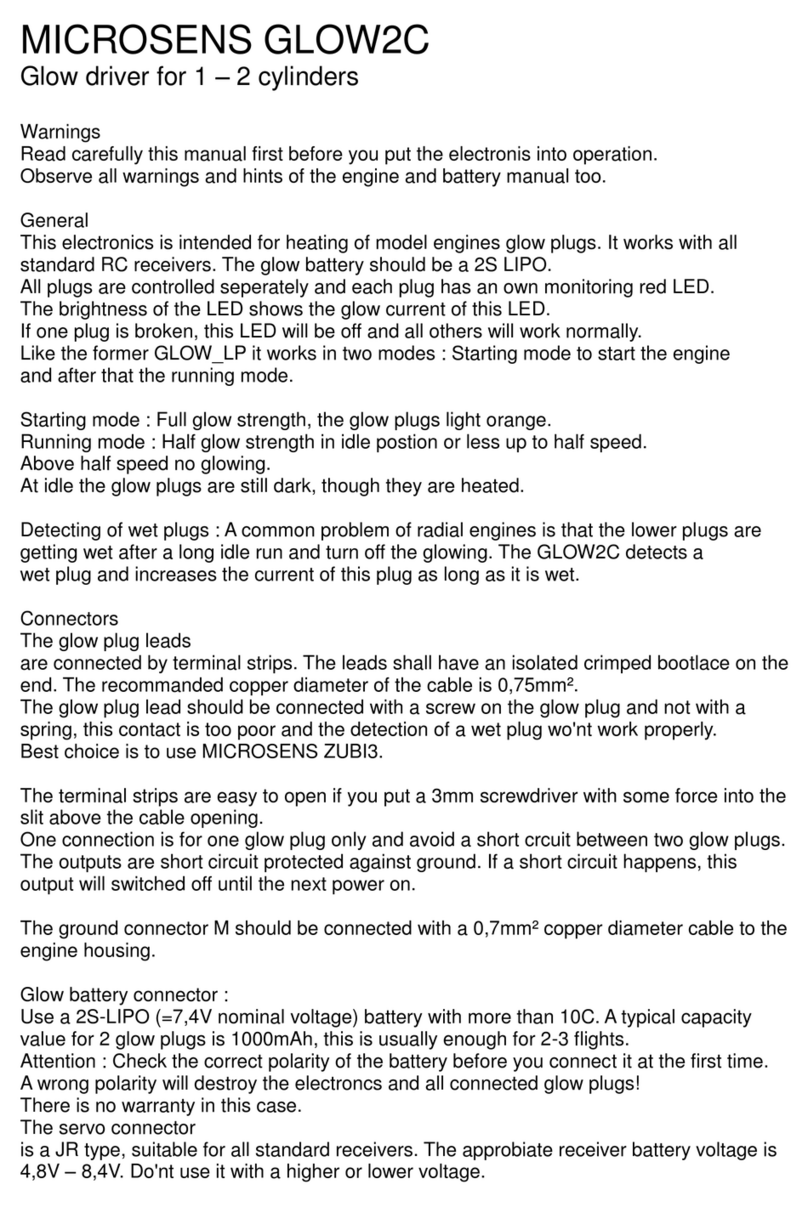
Microsens
Microsens GLOW2C Mounting instructions
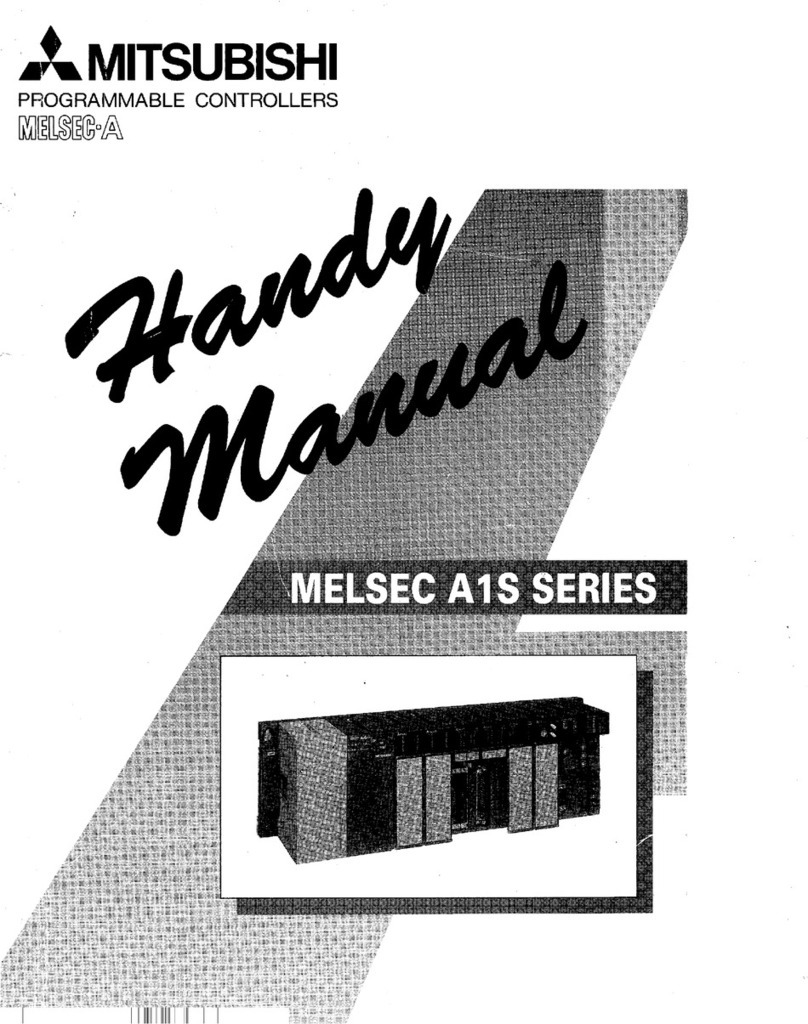
Mitsubishi
Mitsubishi MELSEC A1SCPU Handy manual
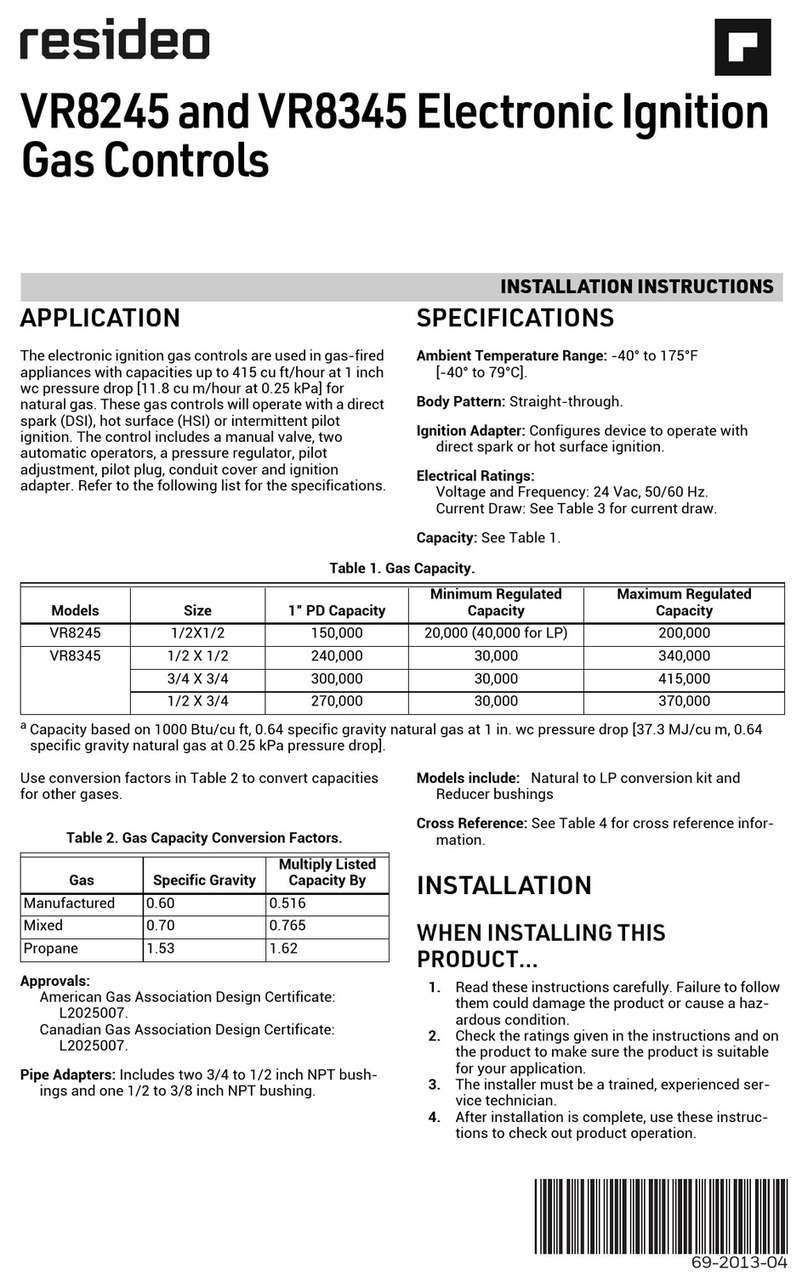
resideo
resideo VR8245 Series installation instructions
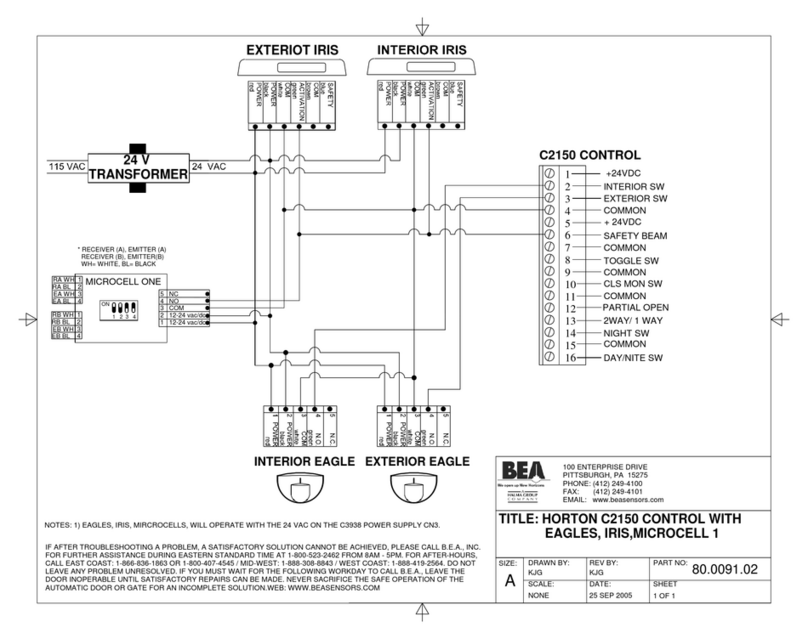
BEA
BEA Horton 80.0091.02 Wiring diagram
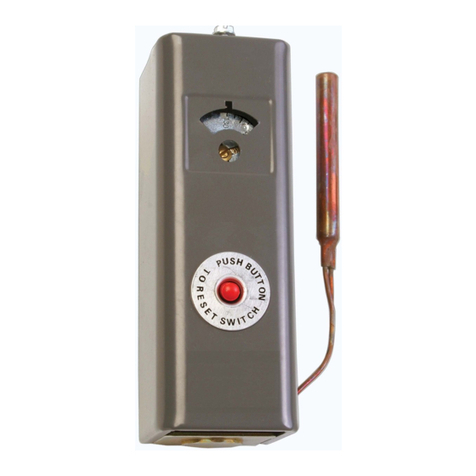
Honeywell
Honeywell Aquastat L4006A installation instructions
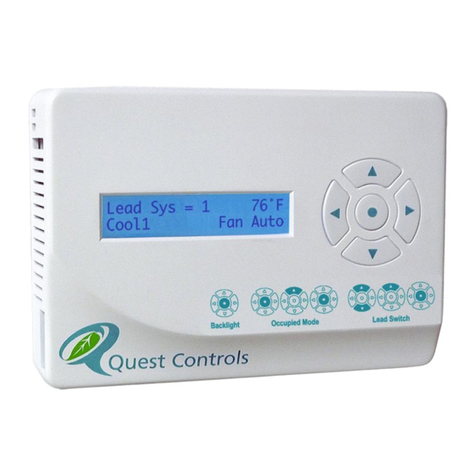
Quest Controls
Quest Controls 100 T-Stat LLC user manual
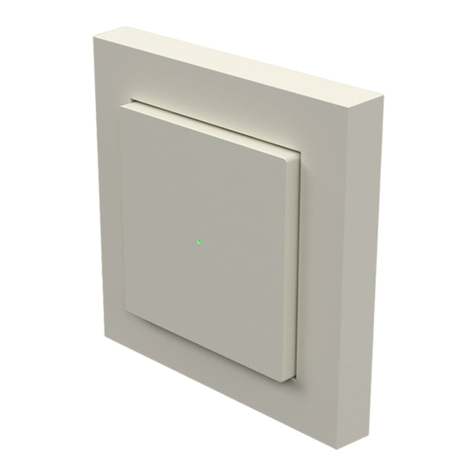
Heatit Controls
Heatit Controls Z-PUSH WALL CONTROLLER Installer manual
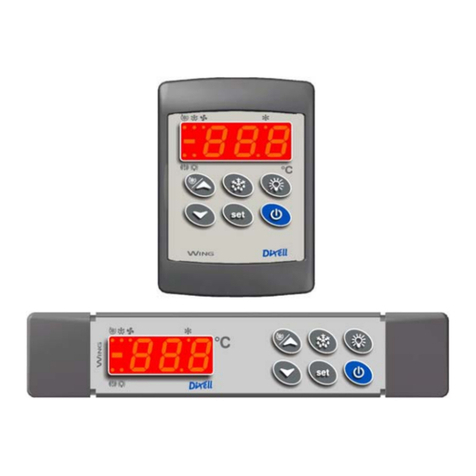
dixell
dixell Wing Series Installing and operating instructions
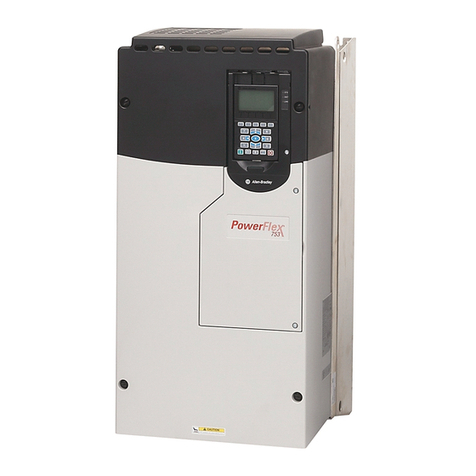
Allen-Bradley
Allen-Bradley PowerFlex 750 Series Programming manual

Belimo
Belimo LRB24-MFT quick start guide
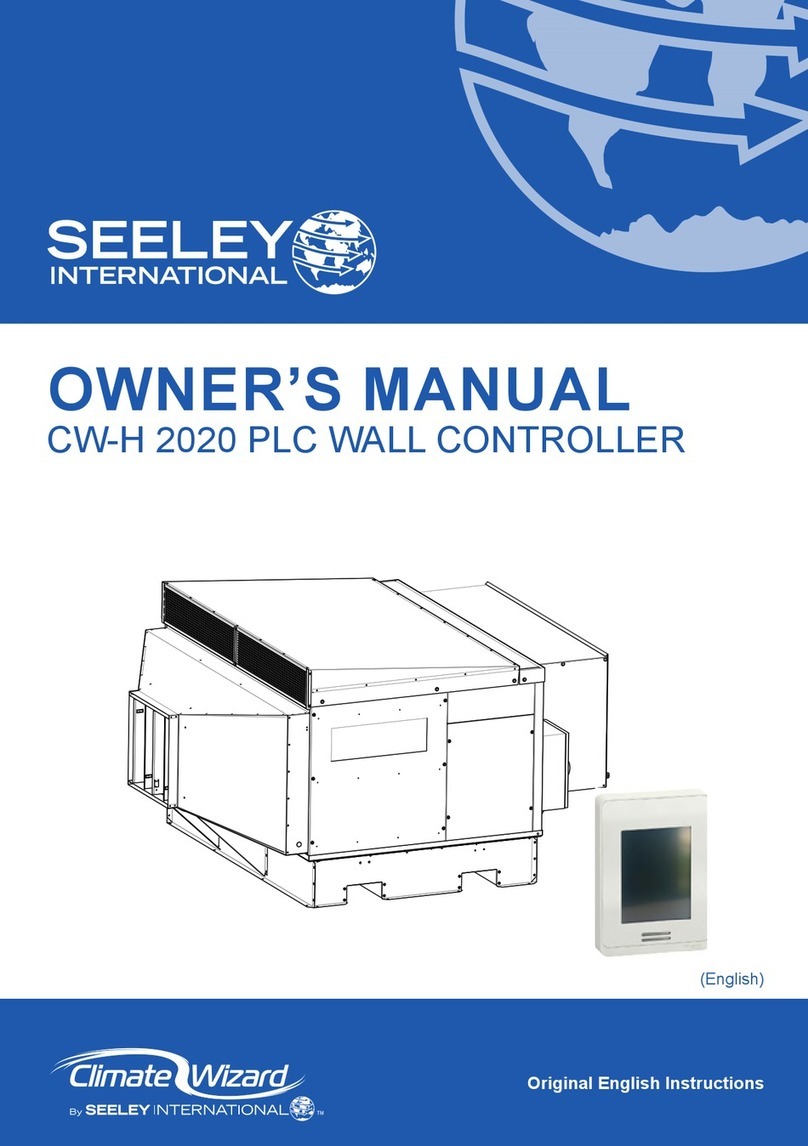
Seeley
Seeley CW-H 2020 PLC owner's manual
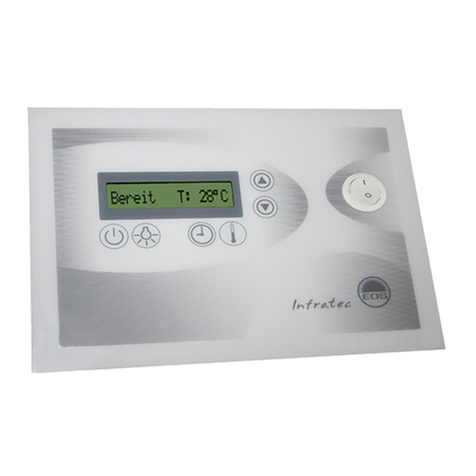
EOS
EOS Infratec Classic Assembly and operating instruction
